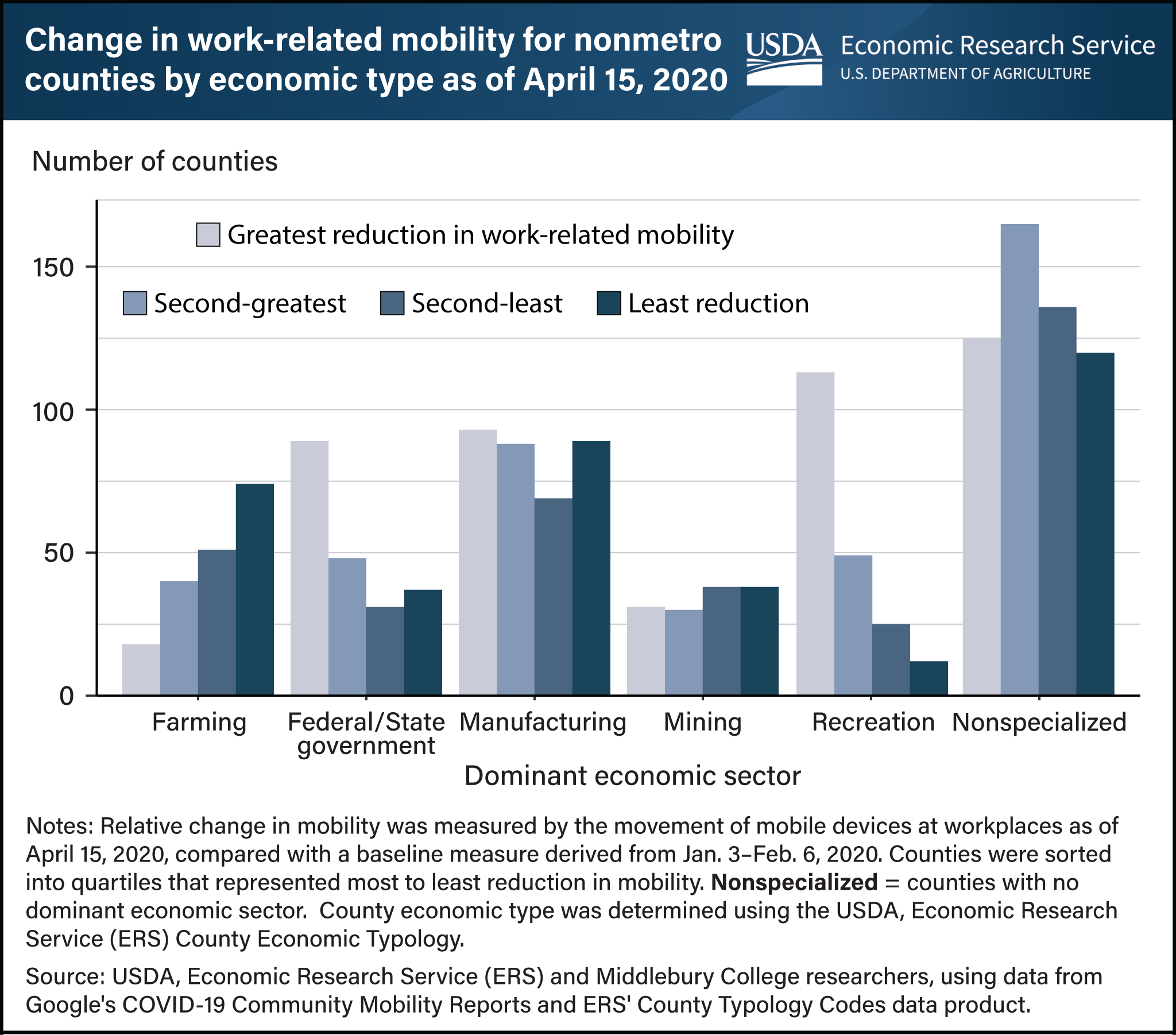Local work-related commuting in farming-dependent counties remained high during initial days of COVID-19 pandemic
- by John Cromartie and Peter B. Nelson
- 12/15/2022

In the early weeks of the Coronavirus (COVID-19) pandemic, when local and State authorities were issuing stay-at-home orders, employees in farming-dependent counties maintained a relatively high level of onsite work and commuting. Researchers at USDA, Economic Research Service (ERS) and Middlebury College divided all rural (nonmetro) counties into four equal groups based on how much work-related local travel was reduced. The four groups were: greatest reduction, second-greatest, second-least, and least reduction. Those in the “least reduction” group had mobility levels similar to pre-pandemic levels. In mid-April 2020, 7 weeks after the virus first arrived in a rural county and a month after stay-at-home orders were issued, there were three times as many farming-dependent counties in the “least reduction” group as in the “greatest reduction” group. Counties dependent on government and recreation jobs showed the greatest mobility reductions during the early months of the pandemic. These differences in mobility reduction help explain differences in the initial spread of COVID-19 within counties. By the third week of April 2020, “least reduction” counties were experiencing infection rates nearly double those in counties with greater reductions in work-related mobility. This chart appears in the ERS report Migration, Local Mobility, and the Spread of COVID-19 in Rural America, published in November 2022.


